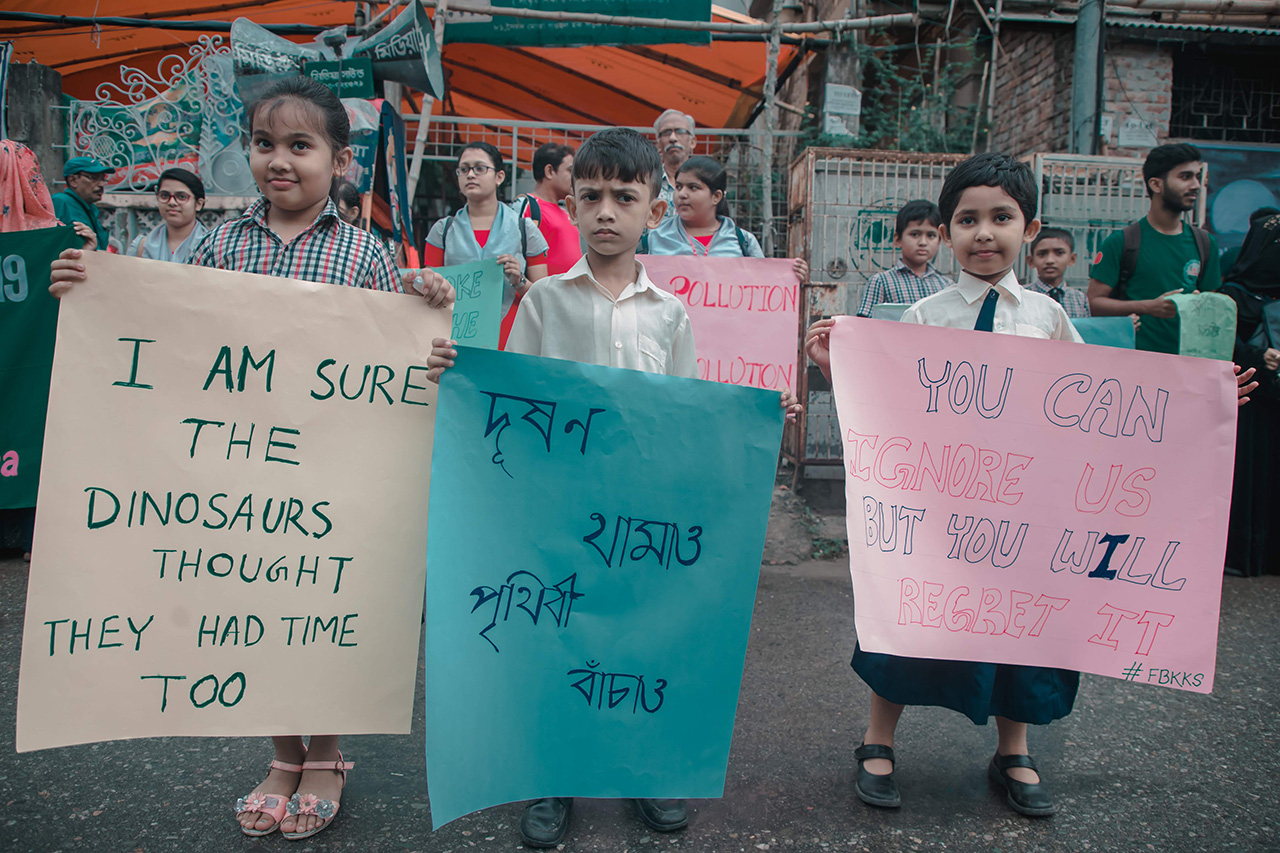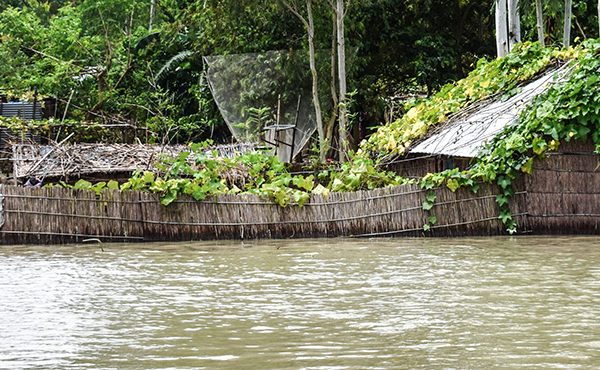Reading Time: 3 minutes
Climate change is playing itself out in more ways than just hotter summers. Bangladesh has been experiencing it first-hand. For this country, millions of people coming together during the global #climatestrike holds incredible value.
The world has just witnessed the biggest climate movement in history. People, young and old, mobilised to the streets in millions to protest the climate catastrophe that looms, if a concerted effort by the global powers to reduce greenhouse gas emissions does not take place.
What could this movement mean for Bangladesh?
For starters, the Intergovernmental Panel on Climate Change (IPCC) identifies Bangladesh being at specific risk from climate change. We have high exposure to sea-level rise, and extreme events such as salinity intrusion, droughts, erratic rainfall, and tidal surges.
Not only do these events cause incredible distress to those who are hit the hardest, such as people living in low-lying lands and especially those living in poverty, they also hamper the country’s food and livelihoods security. The demands of young people on the climate strike all over the world are, thus, seriously applicable to the needs of Bangladesh.
At a time when all the evidence points to a climate emergency, to sit back and do nothing is not short of a violation of the right to life. This reality could not be more true for the world’s youth. Young people of Dhaka joined the global movement, and took to the streets to protest climate injustice on 20 September 2019. They urged political leaders and the media to raise awareness of its negative impacts in Bangladesh, and suggestions were made by climate activists to policymakers that this issue takes utmost priority. Other parts of the country joined in too. Easy Door, a waste management initiative that was initially a project for Amra Notun Network, gathered hundreds of students and like-minded organisations in Khulna. They voiced their opinions, sang songs and created street art together in support of the movement. Easy Door is an initiative which collects recyclable waste from households, in exchange for plants. The growing number of youth-led initiatives such as this shows that climate change does not take a back seat for young people in the country.
Bangladesh is one of the most vulnerable countries to the threats of global climate change. Even though its contribution to the rising greenhouse gas emissions is relatively small, due to its geographical placement, it will have to bear the heavy brunt of the impacts. The extremely erratic weather is an obvious sign, but this past summer, climate change brought out another weapon from its artillery: the dengue outbreak.
The dengue virus put more than 43,000 people in hospitals in just the first eight months of 2019. Only 68% of them made a full recovery. As you are reading this, approximately 9,420 patients, including children, are being treated across the country.
The health bulletin published by the Directorate General of Health Services estimates that this year, the dengue virus took the lives of 29 people, although the unofficial estimates suggest a much higher death toll.
This has been a full fledged epidemic, and in response the government set up special dengue treatment facilities in hospitals. Several thousand doctors and nurses were specially trained. Their Eid holidays were put on hold, but they put their best foot forward to ensure that patients were tended to.
The government’s initiatives also included rooting out the source of the fever – Aedes aegypti and Aedes albopictus mosquitoes – the carriers of the virus. These particular strains of mosquitoes are born and thrive in hot and humid weather, its ideal temperature ranging between 27 and 32 degrees Celsius. Which begs the question: Is global warming the cause of Bangladesh’s recent dengue outbreak?

Recent publications have increasingly began to connect rising temperatures with the spread of mosquito-borne diseases. Some estimate that over the next 50 years, one billion people will be at risk of exposure to disease-carrying mosquitoes. Aside from the dengue virus-carrying mosquitoes, we could expect a dozen others becoming larger threats for the world as a whole.
The spread of diseases such as dengue fever is made far worse by the rising global temperatures. Mosquitoes sustain themselves better in warmer climates – and as the world gets hotter, these mosquitoes can now survive in more places than before.
Data from Bangladesh shows that the number of dengue patients in 2008 was reported at a little over 1,100 people. Ten years later, more than 10,000 people had been affected – a rise of over eight times.
Tropical regions such as Bangladesh are especially vulnerable to diseases such as dengue fever. But a warmer planet means that the spread of vector-borne diseases is no longer constrained to places such as South America, Africa and the Western Pacific, and affects the entire world.
Hotter summers, erratic and destructive weather patterns, increased incidents of diseases are but a few examples from a long list of adversities brought on by climate change. The world today is paying the price of unchecked growth and oversights, but the generation of tomorrow is inheriting a world that is inhabitable. The global climate strike is a reminder of the urgency with which the world has to act, and act fast.
Md Abu Bakar Siddique is a senior manager, Knowledge Management and Communication, Climate Change Programme. Luba Khalili is a deputy manager, BRAC Communications.





